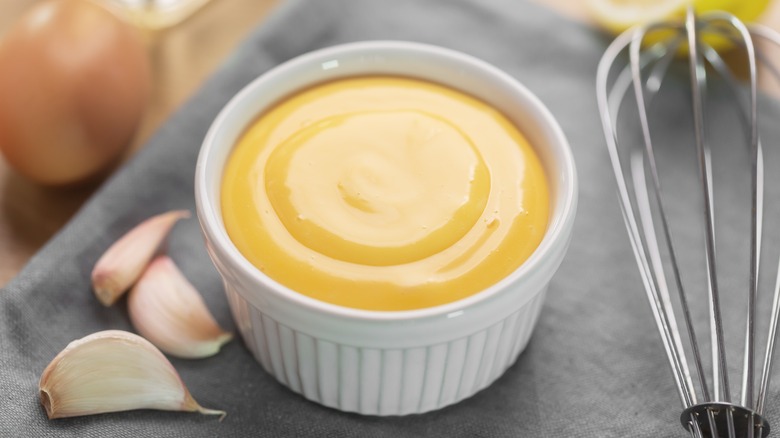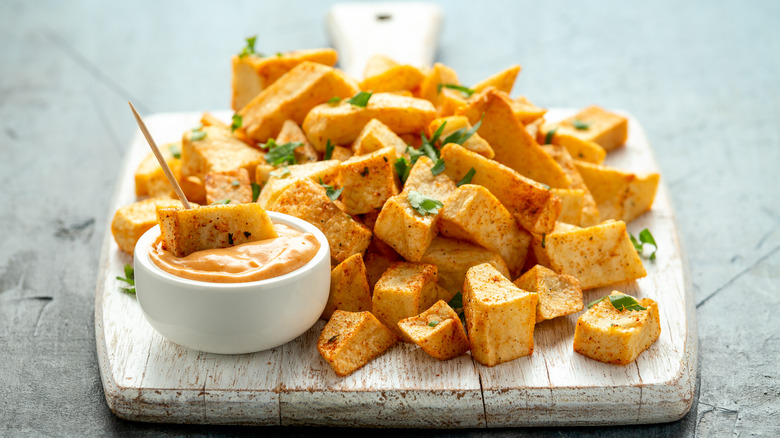Spanish Alioli Is Quite Simple But It Varies Across The Country
Although it has a reputation for being love-it-or-hate-it, it's hard to ignore the evidence that across the world, most people love mayonnaise. Not only is it consistently the top-selling condiment in the United States, according to Statista, but the mayo love actually circles the globe, with cuisines as diverse as British, Japanese, and Russian embracing this jiggly condiment made of eggs or egg yolks, oil, and additional seasonings such as vinegar, salt, and mustard powder. These countries, respectively, routinely tuck into mayo-heavy dishes such as tartar sauce (to accompany crispy-fried fish and chips); carrot- and cucumber-strewn potato salad; and in Russia, well, they eat the stuff on everything, from soup to salad to meat (via Culture Trip).
Of course, mayonnaise and its slight variations go by different names around the world, with the French calling their olive oil-based, garlic-flavored mayo aioli, for example, and the Spanish calling their take on mayo alioli.
Two versions of alioli: with and without eggs
If you've ever traveled in Spain, you've likely found the mayonnaise-like condiment alioli smeared across a variety of the region's delicious foods, from seafood paella, which is often accompanied by a saffron-infused version (via The New York Times), to the tapas essential patatas bravas, cubed, fried potatoes that are often complemented by a paprika-laced variety.
Literally meaning garlic and oil, according to The Spruce Eats, alioli originated in Catalonia, the northern Spanish region that shares a border with France, and it is very similar to the country's garlicky aioli. Spain, though, prepares two versions of the sauce: The original Catalonian version, made with just garlic, extra-virgin olive oil, and salt (via Cocaccia), and a later adaption used in the rest of the country, which includes egg yolks, much like aioli.
Both versions of the sauce are exceedingly simple to make at home, though The Spruce Eats notes that the eggy version will emulsify much more easily. The creamy, garlicky sauce is the perfect accompaniment to a platter of crudites, a tray of roasted vegetables, or a bowl of French fries.

